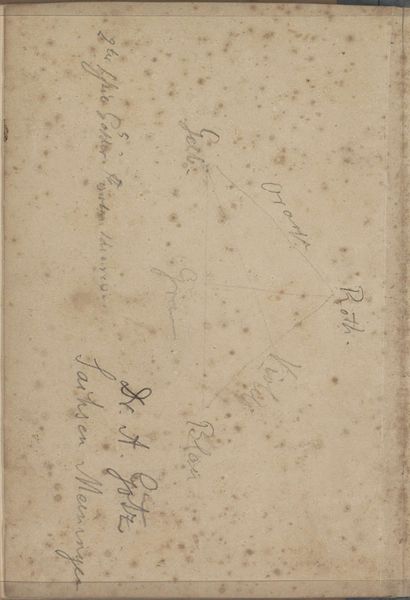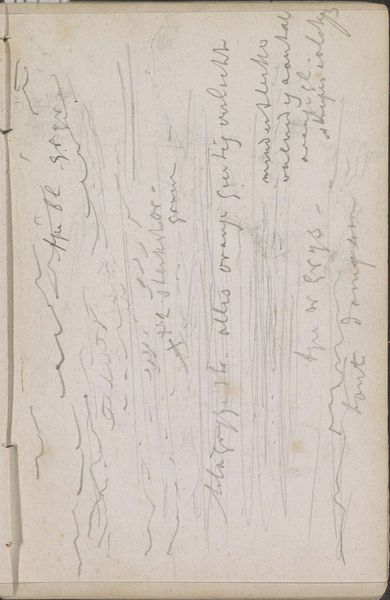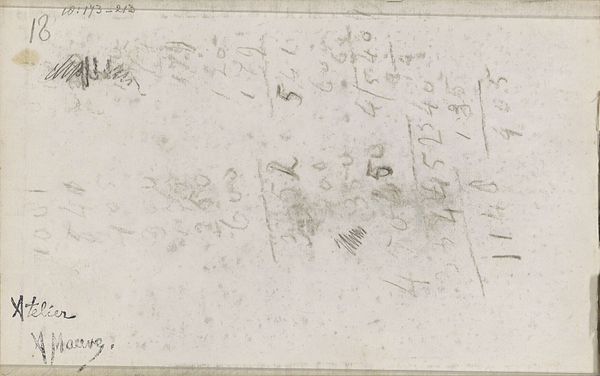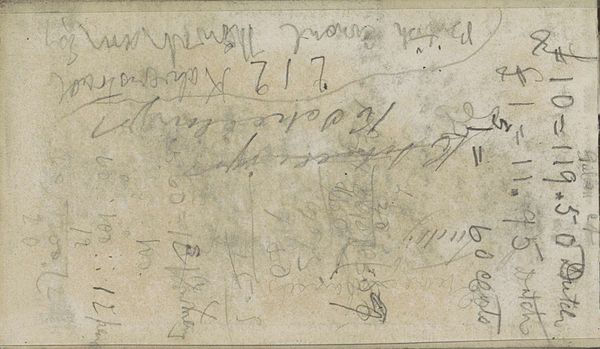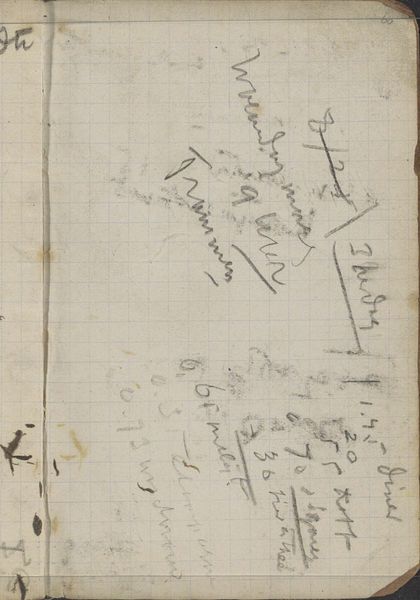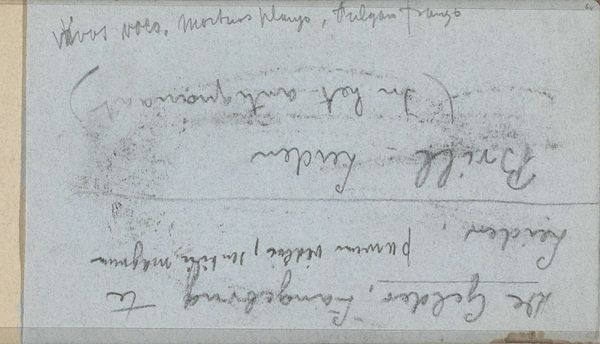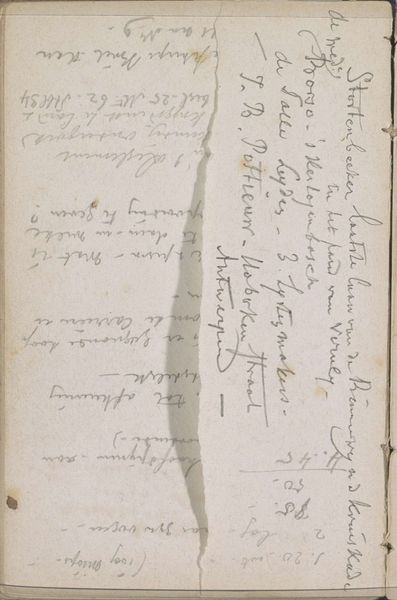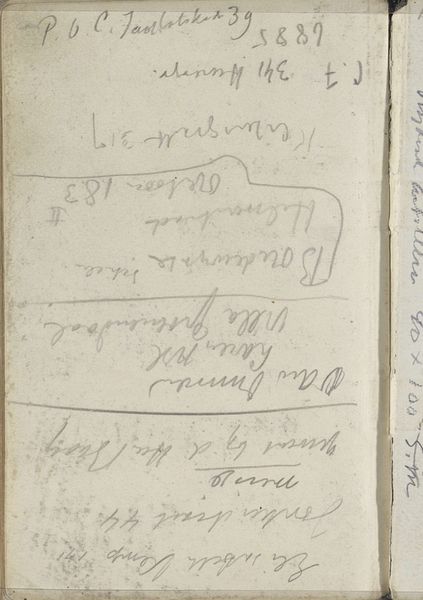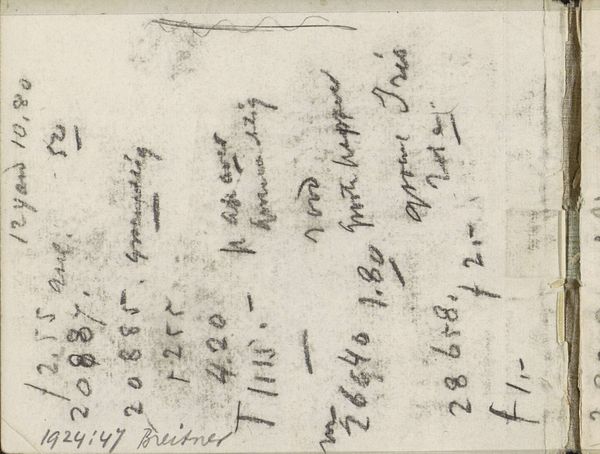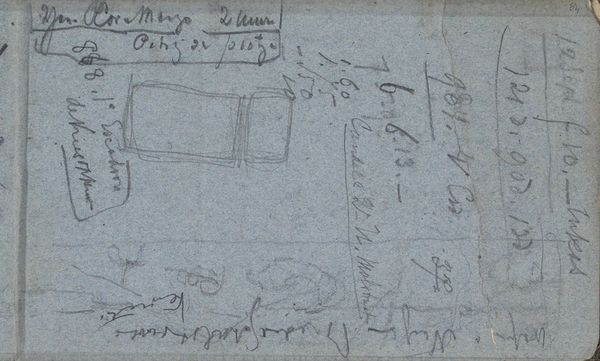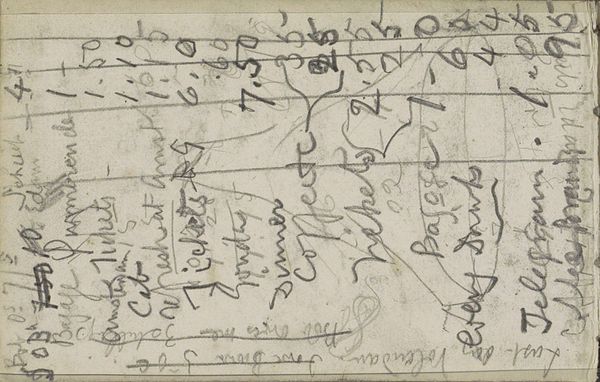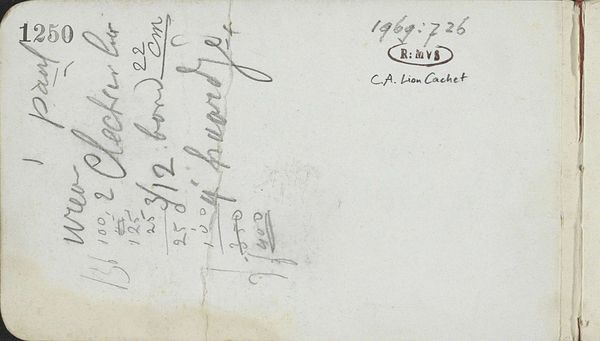
drawing, paper, ink, pencil
#
drawing
#
impressionism
#
landscape
#
paper
#
ink
#
pencil
Copyright: Rijks Museum: Open Domain
Curator: Here we have George Hendrik Breitner’s “Studie en annotaties,” dating from around 1881 to 1883. It’s a sketch on paper, rendered in pencil and ink, currently held in the Rijksmuseum collection. Editor: My first impression is chaos, yet controlled chaos. The hurried lines seem almost frantic, but there's also an underlying structure to the marks on the page. What do you make of it? Curator: I'm fascinated by how this small notebook page becomes a repository for both artistic sketches and pragmatic notations. The scribbled observations and price jottings intertwine with studies. Editor: Interesting. Looking at the composition itself, notice how Breitner uses hatching to create areas of shadow and depth despite the seemingly random nature of the annotations. There's a textural quality to it, a layering of marks that almost mimics the layering of experience. Curator: Exactly, and the labor! I imagine him pulling out this small pad constantly, recording life as it happens. The cheap paper itself, its potential for mass production... this becomes part of the artwork’s story, doesn't it? This daily life of recording, traveling between sites. It isn't so far removed from other means of industrial creation! Editor: Yes, this relates to our earlier conversation about Breitner's work at that time, during the rise of Impressionism, as capturing the immediacy of a moment. His drawing emphasizes spontaneity and light, much like that exhibited in Breitner's cityscapes. Curator: The social context is just as vital. Breitner positioned himself to record working people. Editor: The raw materiality enhances its directness, its feeling of unmediated observation, like we are in that moment together as witnesses. The contrast is heightened between shadow and form, especially on that cluster on the page's right side. Curator: I'm particularly intrigued by the economic notations here. Knowing he considered the cost of "Kork" brings a social lens, right? It roots this practice within a specific moment and socioeconomic class. Editor: It does, and I now read that chaos with more intention, understanding the material and emotional labor from where Breitner may have created these annotations and sketches. Thanks for the additional perspective!
Comments
No comments
Be the first to comment and join the conversation on the ultimate creative platform.

